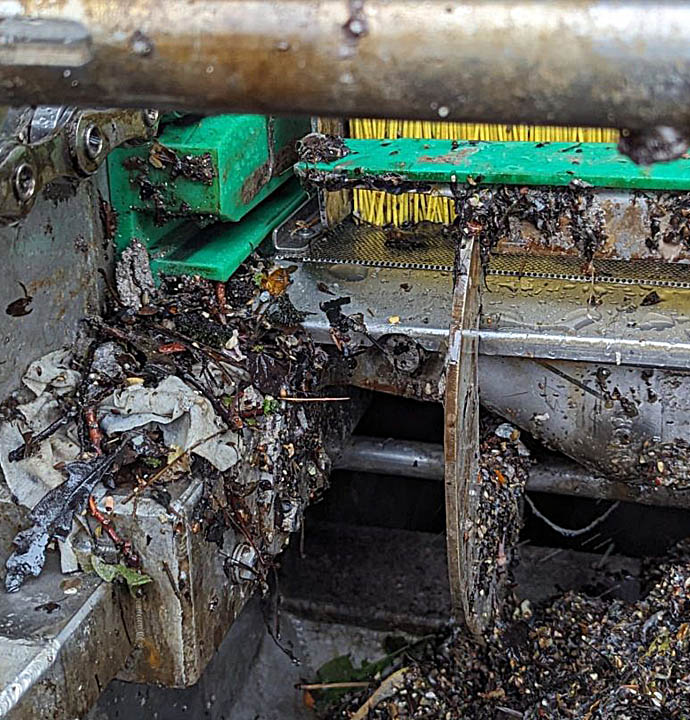
The ICABUS can handle a very high pollution load
Last week, the ICABUS started a new demonstration test at the RWZI Zeist wastewater treatment plant of Hoogheemraadschap De Stichtse Rijnlanden. And we hit the ground running. That same evening, a massive downpour hit the area after a period of relatively dry weather—a first flush.
The result was a significant increase in the amount of discharged screened material. According to the measurement data, this was around 5,000 mg/L, while the ICABUS is designed for 300 mg/L.
What stood out was how well the ICABUS handled this: barely any increase in water level, everything kept running smoothly, even with an active bypass of the screening system. Unfortunately, I had designed the screened material discharge pump far too small—it can only handle a maximum of 1 m³/hr, while we received about 5 m³/hr of screened material. Normally, this pump operates about 10% of the time, but in this case, we encountered roughly 50 times the usual amount of waste.
The next morning, another issue surfaced. The hopper was clogged with debris—not the nice pulp we expected—and the screened material discharge pump had stopped working. The culprit? WET WIPES. We emptied the hopper, pulled the wipes out of the pump, restarted the system, and got things running again. A big thank you to Jan and Jan for stepping in and for your patience!
The moral of the story:
– The ICABUS can handle a very high pollution load
– Do not flush wet wipes or any other non-dissolvable materials down the drain
Curious
Would you like to know more about this project? My name is Frans Durieux and I would like to tell you more about it.
Mail : Frans@purgatoria.nl

